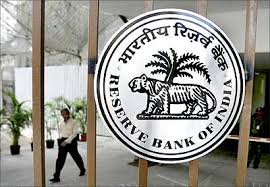Governments liberalisation of financial markets in the 1970s and 1980s led
to greater volatility of market exchange rates and interest rates . That created
both the impetus to, and the means for, further innovation in banks’ financial management. Interest rate volatility and exchange rate volatility created
significant new risks and increased the importance of banks managing their
assets and liabilities. From 1973, instruments for managing such risks –
financial derivatives in the form of financial options like forwards contract, futures contract and
swaps – became widely usable. That is because new techniques (based on
the Black-Scholes model) made it possible to price them and because organised markets were constructed. Financial derivatives enabled banks
to manage asset and liability risks better. They also enabled banks to develop new lines of business by creating derivatives for customers as over-the counter instruments on which the banks earned fees or profit margins.
Those activities were beyond the scope of a Basic Retail Bank (or even a nonbasic retail bank) and should be seen as the business of investment banks.
Therefore, in order to understand those developments, it is useful to see
how the constraints imposed by the Glass-Steagall Act in the United States
and by other restrictions in other countries, separating commercial banks
from investment banks were broken down and then entirely abolished .
Federal Reserve interpretations and court judgements banks
in America gained the right for themselves or subsidiaries to:• advise on and sell securities (1980)
• establish affiliates with a range of securities activities (1987)
• carry out banking across the nation (1994)
• sell insurance nationwide (1997)
• underwrite a wide range of bond and equity issues (1996).
Finally, most remaining constraints imposed by the Glass-Steagall Act were
abolished in 1999 by the passage of the Financial Services Modernization
Act.
These changes, together with international agreements on financial services
in 1997, enabled banks to merge and grow, engaging in a wide range of both
retail and wholesale banking services (or commercial and investment
banking services). Several grew to include insurance services and operate as
universal banks, although universal banking had long been established in the
banks of continental Europe and the mix of banking and insurance was
mainly a European model – ‘bancassurance’. The outstanding example was
Citigroup, a global bank formed in 1998 by the merger of Citibank and
Travelers (principally a large insurance company).
Click here for government certification in Accounting, Banking & Finance





6 Comments. Leave new
Informative…!
Good effort!!
Good Effort
informative article!
Informative work 😀
impressive…